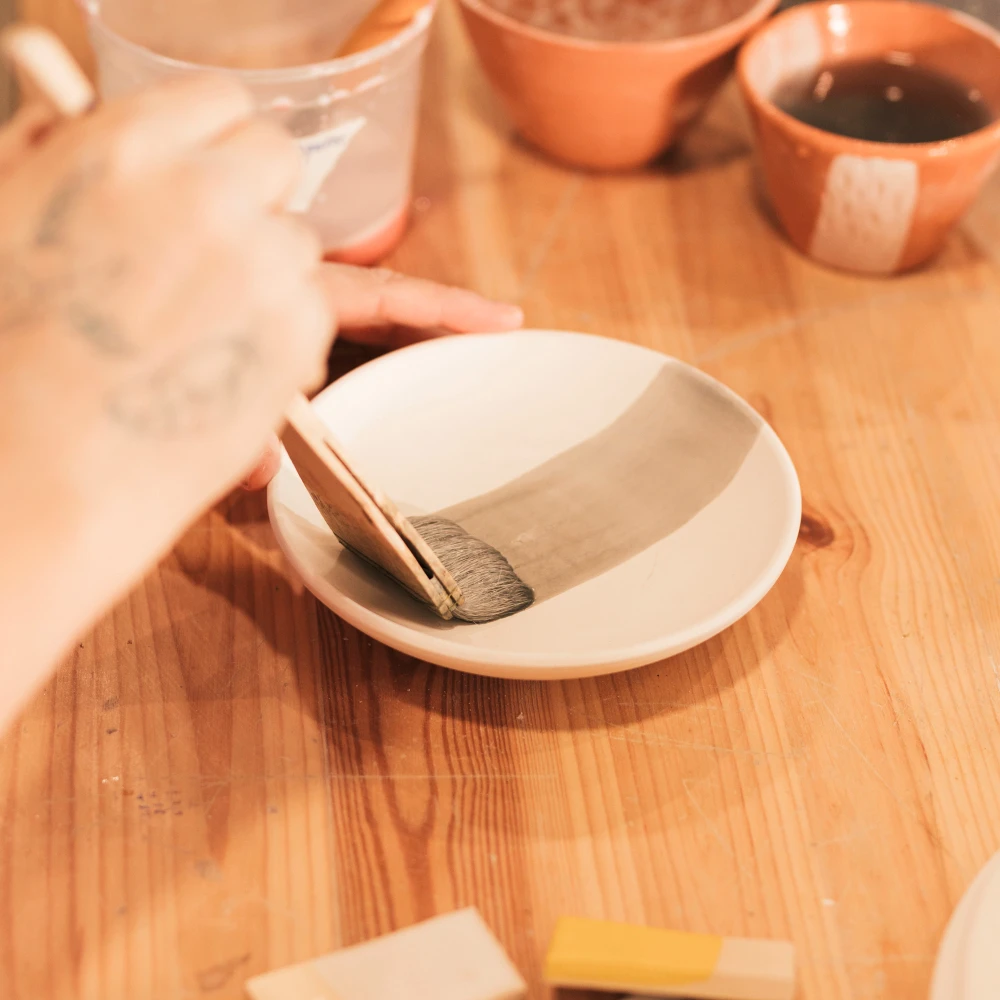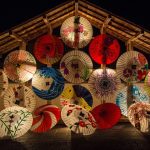The island of Kyūshū has seen many artists over the centuries with one of the most exciting names right now being Makoto Kagoshima. Makoto Kagoshima focuses on clay art, drawing wonderous designs on clay tiles, plates and vases. His illustrations are instantly recognisable and he’s well respected on his native island of Kyūshū.
Today we are going to talk about his path to becoming an artist and discuss his style in more detail. We are also going to tell you about upcoming exhibitions, so you can see his art in person.
Biography
Makoto Kagoshima was born on the island of Kyūshū, Japan in 1967. Judging by his surname, his family likely came from Kagoshima City, which is the capital city of the Kagoshima Prefecture in Kyūshū.
Makoto has quite a long experience with clay, tracing his first memories of creating clay art back to his grandfather’s workshop. His early childhood probably inspired him to pursue art professionally as he later enrolled in a ceramics course at university.
Still, Kagoshima was not able to fully devote his time and energy to ceramic art until he was 35.
In the meantime, he worked at the Conran Shop; the Conran Shop opened its first location in London in 1973, and it’s a boutique with long and illustrious history which offers furniture and various items for the home created by artisans all around the world. Kagoshima worked at the Fukuoka location which prides itself on showcasing the talent of local craftsmen.
Art Style and Inspiration
Kagoshima reportedly drew inspiration from traditional Japanese art, reminiscing about the patterns he saw on his mother’s and grandmother’s kimonos when he was a child. At the same time, he recollects going to the school library to find books on design from around the world, thirsty for new knowledge and inspiration.
Kagoshima doesn’t like limiting himself to one school of design or another, East or West, instead he draws inspiration from various cultures and periods. In his own words, “there is no real difference in ceramic techniques from all around the world”.
Kagoshima thus uses traditional Japanese techniques found in Jamon pottery, while also utilising modern art technology from places like Scandinavia.
Still, the artist confesses that he is most drawn to the Romanesque movement in art. Mainly associated with architecture and applied arts, the Romanesque period (11th-12th century) in medieval Europe combined traits of Roman and Byzantine art to create symmetrical clearly defined forms.
Kagoshima was enthralled with Romanesque decorations in wood and stone, and particularly depictions of fantastic creatures. If you know his works, you’d immediately recognise the influence. The Japanese artist loves portraying animals and giving them impressive three-dimensionality.
He often describes his works as having whimsical and heart-warming motifs, reminiscent of the fairy tales we all grew up with. Blooming flowers, soaring birds, swimming fish and hopping animals adorn Kagoshima’s ceramics. The use of colour is bold, and the images are vivid and easily bring a smile on your face.
Technique
Kagoshima’s technique is just as liberal as his art influences. He uses many different tools to achieve his goals and he is not afraid to explore new devices to bring his pieces to life.
The process always starts with freehand drawing on clay. Once he is happy with the result, he proceeds to apply colour with a paintbrush, utilising a wax-resistant glazing approach. Later, he removes part of the glaze by using the Japanese kaki-otoshi technique; kaki-otoshi, also known as the scratch finish, uses sand, lime and cement to give the piece durability and a natural feel.
Curiously, the artist doesn’t always use the same tool to scrape off the glaze. He would use anything to get the job done, including handy household items like old umbrella bones, and even seashells.
Although Kagoshima primarily creates ceramic art, he has since branched out to explore other materials, sometimes in collaboration with other artists and/or businesses.
For example, Kagoshima recently collaborated with a textile company to create floral patterns to be printed on linen and wallpaper, some of which remind us of designs found English courts in the Renaissance period.
Makoto’s patterns now adorn anything from wall murals to clothes and porcelain cups.
What’s also interesting about Kagoshima is that each piece he creates is unique. Many people working in design rely on one or a few patterns which are repeated in multiple pieces, but not Makoto Kagoshima whose works are as unique as his approach to art.
Exhibitions
Makoto Kagoshima has had exhibitions all around the world, including in his native Japan, the US, and the UK. British and American art lovers seem to love Kagoshima because he is often invited to exhibit his works in museums around the UK and the US.
For more information about future upcoming exhibitions, visit Makoto Kagoshima’s website.
Conclusion
Makoto Kagoshima is right not to limit himself to material, technique, or art movement, proven by the loveliness of his pieces. Yet, despite drawing inspiration from so many different, and often times opposing art styles, his own style is instantly recognisable and beloved all around Japan and the world.



